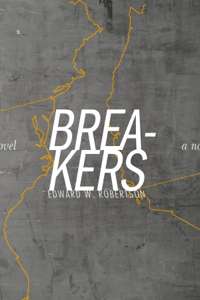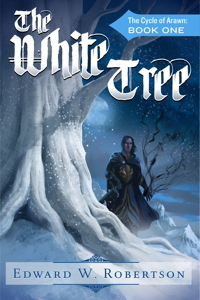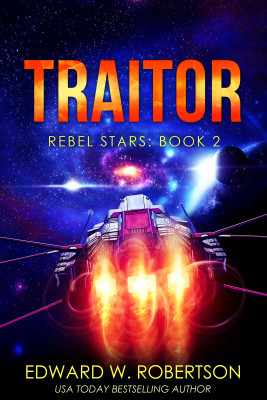THE EXPERIMENT
Early this year, after getting excited by what the Self-Publishing Podcast crew was up to, and after seeing a friend have great success with it, I decided to try my hand at a serialized novel. Serials were clearly working for a lot of people and it looked like fun on both the writing side (new format!) and the publishing side (a new release every week!).
So I set to work, and by April, I was ready to fling mine out into the world. How did it go?
Well, for the TL:DR version, and my all-time favorite post on the matter of selling serials vs. novels, see Susan Kaye Quinn. The slightly longer version is this: there are advantages to writing serials, but they don’t sell themselves any more than novels do. So if your new release strategies are based on, say, advertising novel-length works, releasing story/novella-length episodes might present you with a challenge.
Anyway, back to my results. I wrote a time travel thriller called The Cutting Room. I decided to write 6 episodes, each one running between 12,000-16,000 words and 84,000 in total, with a TV-style arc. I found a pre-made cover from James at the excellent Go On Write and, for a few bucks more, got him to set me up with six distinct looks as well as a full-length version (a 3D box set version, and a 2D version for Apple, which won’t take 3D covers). Individual episodes looked like this:
Not an ideal nailing of the genre, but suggestive of it, and perfect for the mood. In any event, enjoy the pictures now, because a wall of text is about to follow.
OUT INTO THE WORLD!
The first episode went live April 22, 2013. I alerted my Facebook page, then sent to my mailing list the next day. Neither was huge at that time—my FB page was probably around 100 Likes, as I recall, and my mailing list around 300—but that and some advertising had done quite well for the third book in my Breakers series two months earlier.
Excitement! The first day, I sold.. 4 copies. By the end of the first week, I was sitting pretty at 31. (Amazon.com numbers only—Amazon UK and B&N probably put that around 40, but I didn’t keep records for them.)
Well.
Don’t get me wrong, that’s not bad, given the modest size of my lists and the fact I was offering them a new series in a different format. But by comparison, Breakers #3, augmented by some serious ads, had moved 767 copies on .com in its first week. By contrast, this was looking like a bust.
But the advantage of serialization is you don’t get one release, you get a bunch. Six, in my case. With so many books hanging out as new releases, they should pull each other up the charts. Ideally.
Mine didn’t. To cut to the chase, each episode performed about the same. 25-30 copies sold its first week, about twice that in its first month. In an attempt to kick things up a notch, I made the first episode permafree about three weeks in. That helped a little, but with no way to advertise it on the freebie sites (too short), there was no significant bump.
Here is a chart of my first few weeks. It is mostly made of sad.
This is how each episode fared over its first ten days. Again, Amazon US only. Sales are cumulative; i.e., by day 3, episode #1 had sold 23 copies. Each episode was released exactly a week after the first. So in this chart, Day 1 for episode #2 happened on Day 8 after #1 was released. According to my records, #1 went free the day #4 went live. Also, you’ll note these numbers don’t perfectly match up to the ones I quoted above. That’s because I didn’t start pushing the episodes until the day after they went live, so that’s where I started counting for the chart.
Anyway, not a lot to see here. Every week was about the same as the one before it. At least the few people who got into it stuck with it!
Mostly, the lackluster results were because none of my launches was ever significant enough to start getting the books recommended to other readers. I think that if my first couple days of sales had been 30-60 rather than 10-15, I would have seen growth from episode to episode. Without hitting high enough to garner an internal push from Amazon, I was selling to the same group of saps each week (my readers). (That’s a joke, my readers are the best because they read my books, QED.)
So was it a bust? Well, I’d sold a few hundred copies of the episodes, which was better than a sharp stick in the anything. But my serial didn’t really expand my audience—my primary commercial reason for this experiment—so it certainly felt like a failure at the time. So much so that, before the final episode went live, I altered its ending to be a little more self-contained, so the book could better function as a standalone. (I had ideas for at least one more book if it took off.) Rewriting to audience response (or lack of it) was a fun experience, one you could never pull off in a novel. So, there was that. Overall, however, I was disappointed.
THE COMEBACK
But. I had yet to release the full book. Emboldened by my critical failure as a serialist, and with no momentum on the individual episodes, I decided to go all-out with the complete novel, releasing at $0.99 backed by whatever ads I could scrape together. Here was my cover:
I was in no hurry, and it took about a month to schedule everything, leap through Apple’s hoops, etc. Once it went live into the world, I discovered something funny: a lot of my readers hadn’t been interested in the serialized version, but they were plenty happy to pick up the full novel. With the individual episodes, my readers on FB and my mailing list were good for about 10 Amazon US sales in the first two days. With the full book, over an equal period, they were good for 54, and crossed 100 the day after that.
Then the ads kicked in. Which I could run, because this was a full-length novel, not a 15,000-word short. (Serializing gave me one advantage there, however: since some of my readers had already read the full thing, they were ready to review it right away. It was sort of like ARCs. That I made them pay for. Hahaha.)
With the initial push from my readers, the book became embedded in Amazon’s recommendation algorithms, which the ads helped amplify. Within a week, it had sold 575 copies there. I switched it to $2.99 a couple days after that. By the end of its first month, its Amazon US sales were about 1150, with another 150-200 on the other sites as well. Compare that to 50-60 sales of each episode over a similar timeframe.
Hooray for me! Wait, that’s not what this post is about; this post is about cold-blooded dissection. Where did I leave my scalpel?
LESSONS LEARNED
The first, and the biggest, is that serials aren’t a magic bullet. I guess that should be obvious. Nothing is! Earlier this year, however, it sort of felt like they were; at the very least, it seemed like serialization was a sure-fire way to expand your audience through the boost given to each new release.
For me, it didn’t (except maybe a little bit at Kobo). It could be the book or some part of its presentation hampered it, but whatever the cause, my episodes never gained enough momentum for the algos to take them off to the races.
Know what though, we can break this down. Here’s the main cause of my failure to launch: a) I was starting a new series my readers weren’t familiar with b) in a format they weren’t used to buying (serial rather than novel) c) with a limited fanbase to begin with (~400-500 potential readers on my lists) and d) with no outside sources to augment that potential readership; the episodes were too short to advertise in the venues I was familiar with, and I wasn’t creative enough to find alternate ways to reach people.
So basically, the only people buying the episodes were my core, core readers. The people who would buy and read the Kleenex I just sneezed into. If you’re looking at serializing purely for the benefit of multiple new releases, take a long hard look at your audience and understand that most of them aren’t going to follow your experiment right away.
Genre is part of this equation, too. Serials work better in some genres because those readers are actively searching for new content. Romance, definitely. Erotica/erom, for sure. Zombies, I think so. Time travel special ops? I.. no. No, there’s no rabid readership waiting for the next one of those to drop.
ON THE UPSIDE…
I’m talkin’ all mercenary here, but this experience was a ton of fun. Publishing a new episode every week was a blast. I would love to do that again.
Now, back to mercenary sales talk! Additionally, the format of serials provides you with many opportunities you don’t have publishing full-length novels. After the tepid response to the initial episodes, I was able to adjust my promotional tactics on the fly, permafreeing the first episode before the last was out. Not only that, but I was able to change the last episode itself based on this (lack of) response—since it looked like the season was a failure, sales-wise, I revised the ending to let the book function as more of a standalone story that would, hopefully, be more satisfying and self-contained. ‘Cause I sure as hell wasn’t gonna write a sequel to something nobody appeared to want!
There are obvious dangers with making changes like that, but being able to adjust and adapt to reader response is an incredible option to have in your back pocket.
Also, now that the full book is out there, I still have episode one free pointing to the whole thing. It doesn’t give away copies in the volume that a full book does, but it’s a nice little long-term funnel.
HOW TO DO IT BETTER
First: stick with it. My first season didn’t see any growth from episode to episode, but quite a few people wound up picking up the full novel. I think that, if I were to do more seasons, I would do a lot better. Mostly because my lists are much bigger these days. But also because I’ll have created a readership for The Cutting Room and that readership will be more used to serialization, meaning more of them would pick it up right off the bat.
Along similar lines, it would help lots to serialize something in a series/world where you’ve already got readers. Those people are already waiting for the next installment, whatever it is. That’s going to reduce a lot of their resistance to purchase a different format.
Note that I’m not saying everyone should serialize the next novel in their popular series. Just that, if you are interested in trying a serial, it’s going to help if your readers are already into the world. You could do a spinoff, say; pick up a secondary character or storyline and branch out into that in a serialized format. Now I’d better quit exploring this idea before I convince myself to do it.
Another area to explore with serials is pricing. When I released mine, I screwed up royally. Since $0.99 is the lowest you can charge for an ebook, those faithful readers who picked up The Cutting Room episode by episode paid $5.94. Then when I released the full book, I kicked it out the door at $0.99. That was due to circumstances forcing my hand, but.. that is not how you want to treat your most loyal readers, haha.
So, here’s my wonkiest idea of all: use inverted pricing. Price your episodes so buying them all will cost less than the full book. If you have 4 episodes, buying them will cost a minimum of $3.96; thus, sell your episodes at $0.99, and let your readers know that if they wait to buy the full book, well, it’s gonna cost $4.99. If you’ve got 6 eps, buying them one by one will run them $5.94, but the collection is going to be set at $7.99.
MADNESS!
Yes. Madness. A higher price will make the full-length book less appealing to readers who stumble onto it later. But that price doesn’t have to be permanent; when you get to season two, you could cut a couple bucks off the price of the complete season one. Either way, season one will still have a permafree entry point going for it. You might even package the first two episodes into a double-length pilot, the way a lot of TV shows do, and set that free to help people choose whether to plunk down for the full book. Size matters, gentlemen. If that double-length pilot is up around the 40K word range, you might have an easier time advertising it.
In any event, the point of inverted pricing isn’t to make money here and now on the full-length novels. It’s to take advantage of the perks of multiple new releases, reaching new readers episode by episode, expanding your reach each time. It’s a short-term hit for a long-term gain, Amazon-style.
GOOD LORD THIS IS AS LONG AS A KKR BLOG!
This post has largely banged on about sales, but serializing a novel was a really, really fun experience. I don’t want that to get lost in all the numbers-talk. Serializing challenged me to think about story structure in a new way, and publishing a new episode every single week was tremendously enjoyable. Despite the difficulties, I’d love to try it again some time.
It also taught me a lot about why books sell. Much of what I learned is very basic—people are more likely to buy what they already know and like, be that novel-length fiction or a world they’re already familiar with—but the fact it’s simple means it’s all that more valuable to understand.
The other very simple thing it taught me: episodes aren’t novels. Trying to sell serialized fiction is a much different world than trying to sell full-length books, complete with different advantages and different challenges. If you’re going to try a serial, I would examine those challenges ahead of time and do your best to nullify them.
Maybe that’s just a matter of sticking with it.
As self-published authors, we don’t talk about failure enough.
Tobias Buckell recently wrote a piece about “survivorship bias” and its relation to self-publishing. He argues that the problem with self-publishing is we only hear from the winners. The survivors. When all you hear about are the successes, your view of how easy it is to succeed will be wildly distorted. His argument is based on this great article from You Are Not So Smart, which you should totally read.
Done? Yay. In response to Buckell, authors on KBoards have raised the interesting counterpoint that literally every single trad-published author is a survivor, meaning their whole perspective is skewed. Which.. is tough to argue with. On the other hand, I don’t think it nullifies his point.
A lot of people are self-publishing. Very few of them do well at it. And you almost never hear–and thus learn–from the failures.
Well, I named this blog Failure Ahoy for a reason. I think failure is awesome! Failure is what happens when you try. Fail enough, and you might even succeed. With that in mind, I’m going to post more about failure. I want to make it okay to suck. I have failed in many ways along my self-publishing journey, but there is no more stark or hilarious an illustration of that failure than my first covers. Man, I might need to brace myself here. Like with tequila.
Okay, ready if you are. Let’s dig up some corpses.

















